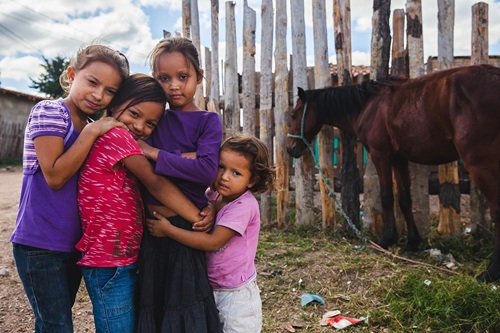(415) 300-0180

In the mountainous regions of Peru, Carmen’s weaving cooperative was at a crossroads. Despite producing beautiful textiles in demand by international buyers, the cooperative couldn’t secure a $1,500 loan for new looms. Traditional banks were out of reach, and local moneylenders charged crushing interest rates. But through crowdfunding, Carmen’s cooperative raised $2,000 in just 10 days. Today, their cooperative employs 15 women and exports globally. This is more than a success story—it’s a testament to how crowdfunding is breaking down barriers to financial access and empowering communities worldwide.
For many rural communities, distance from financial centers, poor transportation infrastructure, and sparse populations make traditional banking inaccessible. Beyond physical isolation, requirements like credit history, collateral, and even minimum balances put formal financial services out of reach for these communities. Many find themselves vulnerable to predatory interest rates from informal lenders, limiting growth and perpetuating poverty cycles.
Being cut off from formal financial services impacts both economic growth and social development. Financial exclusion translates to higher transaction fees, limited business growth, and reduced resilience against financial shocks. This affects not only individual families but also the broader community, often limiting access to education, healthcare, and social mobility.
Crowdfunding is opening doors, providing remote communities with 24/7 platform access through mobile-first solutions that require minimal documentation and no collateral. For the first time, people in isolated areas can reach global donors, raising funds directly from those who believe in their mission.
Crowdfunding platforms also address financial efficiency, with lower transaction fees, transparent pricing, and minimal overhead. Funds are sent directly to recipients, avoiding intermediaries and allowing more of each dollar to make a tangible impact.
Crowdfunding isn’t just about raising money—it’s about building networks. Communities can showcase their projects to the world, sharing their goals, updates, and success stories. Donors become part of these stories, creating a sense of shared achievement and engagement that traditional banking rarely offers.
In rural Zimbabwe, crowdfunding enabled 200 households to raise $17,500 in just 45 days, providing solar installations that reached over 1,000 people. Similarly, a Colombian coffee cooperative secured $8,000 for processing equipment, benefiting 45 families and increasing incomes by 30%. These projects highlight crowdfunding’s potential to address unmet financial needs, foster sustainable growth, and create lasting change.
Technologies such as SMS notifications, USSD interfaces, and offline capabilities make crowdfunding accessible even without reliable internet. By offering voice guidance and local language support, these platforms ensure inclusivity, allowing communities with limited digital literacy to participate.
Digital payments—whether through mobile money, cryptocurrency, or digital wallets—reduce reliance on cash, making transactions secure and traceable. To establish trust, platforms partner with local organizations, community leaders, and respected figures who endorse projects and serve as liaisons with the broader community.
Crowdfunding platforms track funds raised, jobs created, and services delivered, while also considering qualitative indicators like community empowerment, knowledge transfer, and social cohesion. This dual focus ensures that projects benefit individuals and contribute to the long-term development of the community.
Crowdfunding supports a model of sustainable growth, driving business creation, market access, skill development, and leadership. Communities that secure initial funding can establish stable income sources, enhance local investment, and build a foundation for long-term prosperity.
Many rural communities face digital literacy challenges. By simplifying interfaces, offering visual guides, and providing local support, crowdfunding platforms empower these communities to actively participate. Training sessions, peer learning, and community hubs further bridge the gap, making crowdfunding accessible to all.
Even in areas with limited internet, crowdfunding can work. Offline modes, mobile optimization, and SMS integration keep communities connected to their projects and donors informed, allowing projects to progress even in low-connectivity regions.
To encourage trust, platforms regularly update stakeholders with clear documentation, real-time project status, and verified achievements. This transparency reassures donors and inspires communities to take an active role in maintaining the integrity and success of their initiatives.
For crowdfunding to foster enduring change, communities need foundational skills in financial and digital literacy, business planning, and community organization. These skills enable them to navigate funding, grow their projects, and build self-sustaining models.
The best crowdfunding projects focus on long-term impact, reinvesting in the community, transferring skills, and expanding access to resources. This approach ensures projects not only benefit today’s recipients but also empower future generations to achieve sustainable development.
Crowdfunding goes beyond financing—it’s a transformative tool for economic empowerment, community development, and social change in remote regions. By bridging the gap left by traditional banking and offering communities an accessible, affordable way to achieve their goals, crowdfunding is enabling new paths to opportunity, growth, and self-sufficiency.
Ready to break down financial barriers? Whether you’re a donor, a project creator, or a community leader, crowdfunding offers a pathway to lasting change in remote and underserved areas.

Christopher Robison is a San Francisco-based software engineer and tech innovator with 25+ years in the industry. Specializing in blockchain, AI, and robotics, he’s built custom 3D printers, led tech transformations, and created impactful digital solutions for biotech, finance, and beyond. Outside of work, he’s a punk rock karaoke regular, golf enthusiast, and a tinkerer who’s always building something new alongside his cat Otis and dog Yuki.